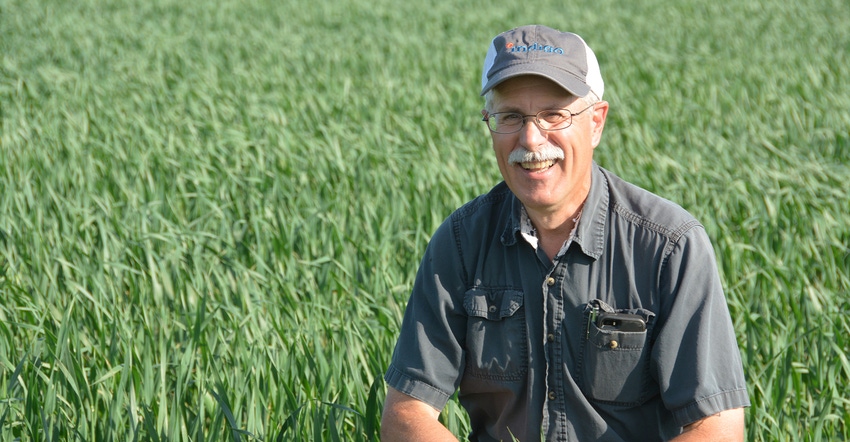
How far north can cover crops go?
That’s what 32 farmers in the “How Far North Can We Grow? 49th Parallel Cover Crop Project” are trying to figure out. All of them farm in northern tier counties in northeast North Dakota. All have been experimenting with tillage systems and cover crops for several years.
They currently in their fourth and final year of the 49th Parallel Cover Crop Project. The Natural Resources Conservation Service, the Soil Conservation Service and the North Dakota Extension Service have helped the farmers take soil tests, check soil temperatures, measure cover crop biomass and collect other data.
“We have had successes and failures, and we’ve learned from both,” says Paul Overby, a Wolford, N.D., farmer who organized and coordinates the group’s activities.
Some early takeaways include:
1. Planting cover crops after small grain harvest will be a challenge most years in northern North Dakota. There isn’t enough sunshine or warm temperatures after small grain harvest to get decent growth on the cover crops. Sometimes it is too wet to plant cover crops after harvesting small grains. Other times it is too dry for cover crop seeds to germinate when they are planted. They may germinate later in the fall, but they don’t have enough time to establish a good stand or to grow a large amount of biomass before it freezes.
Planting cover crops after row crop harvest is impossible. Sometimes row crop harvest continues through December.
Labor is in short supply during small grain harvest when cover crops are normally planted. Many farmers don’t have enough people to be combining and planting at the same time.
“You really can’t afford to stop the combine when conditions are right to harvest,” Overby says.
2. A more promising cover crop planting window up north is to interseed cover crops into growing grain or row crops in June. There’s a bigger window to catch the right combination of moisture and heat to get the cover growing soon enough to establish an effective stand.
Some of the farmers in the project have tried flying cover crop seed on; others have drilled it into stands with a low-disturbance, single disk drill. Both have worked. Aerial seeding is good if it is too wet to get a tractor and drill into the field. If the soil is dry enough to plant, the drill results in better seed-to-soil contact.
3. The jury is still out on the economics of cover crops in northeast North Dakota. The group hasn’t seen any significant yield increases or input reductions. But they have seen the needle move on soil organic matter levels.
Overby, for example, who has no-tilled for 15 years and has a diverse crop rotation, has seen organic matter on his most productive soils increase from 4% to 5% to a range of 6% to 7%. His least-productive soils were 2.5% to 3% organic matter. Now they are 3% to 3.5%.
The increase makes a difference in the soil’s water holding capacity and carbon mineralization. Carbon is converted to nitrogen at different times every year. The release of N to the plants is triggered by heat, moisture and biological activity. Overby has been experimenting with adjusting fertilizer rates based on organic matter.
Overby also sees some of the new income possibilities with cover crops. He grows oats for General Mills, which is interested in buying grain from farmers who no-till, protecting the soil with residue and using cover crops. General Mills recently announced a goal to advance regenerative agriculture practices on 1 million acres of farmland by 2030.
General Mills has made two presentations to the cover crop group. Learning how to use covers crops will help make the farmers preferred suppliers in the future, Overby says.
Also, Indigo Ag, a national company hopes to source identity preserved grain for processors, has been in contact with General Mills. Indigo is interested in supplying processors with grain from farmers who use sustainable and regenerative production practices.
“Farmers are going to have to be doing little or no tillage and using cover crops in their rotation to even be talking to these processors,” Overby says.
Indigo recently announced its involvement in a carbon credit market. “It’d be would be double opportunity — carbon credits and IP grain,” Overby says.
The 49th Parallel Cover Crop Project has helped participants think about their farm’s ecosystem instead of just individual production practices. It’s challenged them to find solutions that benefit the whole farm.
“It’s made farming fun again,” Overby says.
Look for the final report from the group this winter.
About the Author(s)
You May Also Like






